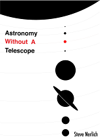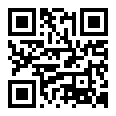Too cold outside
The cheapest astronomy of all
If visibility is poor, or it’s just too cold outside, you can just park yourself in front of a computer and explore the universe within.
Virtual planetariums
Programs like Stellarium run in real time from your chosen location (click on the spanner icon for configuration options) allowing you to see what’s up in the sky whatever the weather. You can also turn off atmospheric scattering allowing you to see what’s up there during full daylight. Use your mouse wheel to zoom in and out and you have a virtual cheap telescope at your disposal.![]()
Programs like this are a great way to grasp how the celestial sphere is orientated, find the ecliptic and track the phases of the moon. You can speed up, slow down and reverse time at will. This lets you watch the stars spin about the celestial pole—and watch the sun’s path through the sky (i.e. the ecliptic) changing throughout a year. Tell the program you live on the Equator—or the South Pole—and see how the sky changes.
For a different experience, try also Celestia which gives you a view of celestial bodies from space, but still in real time and with their locations correctly mapped. Find the Solar System Browser in the Navigation menu to visit your favourite planet and its moons. Hold down the right mouse button and you can move objects in 3D. Speed up time to see objects rotating and orbiting as you like.![]()
Stellarium and Celestia are both free open source software.
These programs are in many ways superior to the traditional cardboard/plastic planispheres, particularly since they can also show where the planets are at any time. However, a planisphere remains a handy (and inexpensive) reference device for star locations if you are out and about.
Websites
Wikipedia is hard to beat for a query engine that delivers vital statistics on any celestial body; a neat executive summary of various astronomical concepts; and even the latest on a current spacecraft mission.![]()
Heavens Above is about the simplest and the best website to find what’s coming up in the sky, both man-made and natural. Make sure you register (free) so it will align itself with your location (otherwise you’ll be trying to find stuff that isn’t above you).![]()
The International Space Station passes over most locations every month or so in its roving 90 minute orbit. Heavens Above can tell you when it will pass over where you are. The best time is not long after dusk when it still catches the sun and the best view is when the maximum altitude is approaching 90 degrees (which is directly overhead). The website also has other satellite tracks and a no-frills real time sky chart if you don’t have your virtual planetarium handy.
And then there’s NASA: ![]()
Try some Hubble telescope images; see what the Mars Rovers are doing; see how far Voyager 1 has got (most distant human-made object and still transmitting after 30 years in space); plans to Return to the Moon and then Mars. And let us not forget Australia’s role in it all through the CDSCC, one third of NASA’s Deep Space Network.
Astronomy Cast—the best podcast in the universe.![]()
Star Stuff—the best Australian podcast in the universe.![]()
Sydney Observatory—handy monthly sky guides in text, chart and podcast form.![]()
The Planetary Society is out to save the humanity through space exploration (seriously). The site has a good blog on the latest space exploration news and the Planetary Radio podcast.![]()
Ice In Space offers a good old fashioned astronomy community discussion group focused on the southern skies.![]()
For a horizontal perspective, try: Sleeping under stars and planets, particularly the Virtual Experiences and Planetariums from Home section (thanks Payton).
And for general science interest:
The Science Show—the best of Australian radio—and of course a podcast.![]()
The Skeptics’ Guide to the Universe—the podcaster’s podcast.
The Naked Scientists—laying the facts bare.![]()
Astronomy and Space Resources—just was it says, a treasure trove of astronomy and space resources.
FindTheData: Planets & Comets and Asteroids—Like lists and numbers? This is the site for you.
Astronomy Resources for Kids Outdoors in a Park or Playground. Fun stuff for young astronauts (thanks Cassie).
All About Famous Astronaut Neil Armstrong – First person on the Moon (thanks Cassie).
Blast Off! – Word Tips. More fun stuff for young astronauts (thanks Katie)




